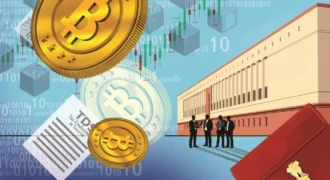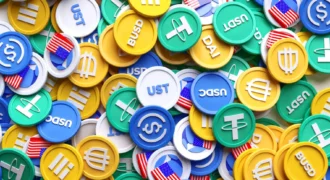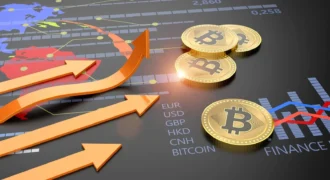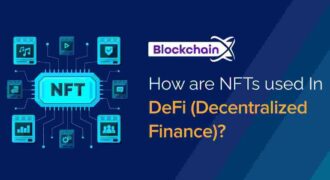Bitcoin isn’t just a digital currency — it’s a psychological battlefield. Behind every price surge, every sudden crash, and every long-term holding decision, human emotions play a pivotal role. From FOMO (Fear of Missing Out) to long-term vision, understanding the psychology of Bitcoin investors is essential to navigating this volatile market.
Why do some investors buy at the top of a bubble, while others hold through years of price stagnation? Why does sentiment swing from euphoric optimism to paralyzing fear in a matter of weeks? The answer lies in the unique interplay of psychology, scarcity, and perception that defines Bitcoin investing.
FOMO: The Force That Drives Markets
For many new entrants, the first encounter with Bitcoin is an irresistible force: FOMO. Social media buzz, celebrity endorsements, and headlines about massive gains lure investors in, often at market peaks.
FOMO is powerful because it taps into a basic human instinct: we fear being left behind. When friends, family, or colleagues share stories of life-changing profits, the mind quickly rationalizes the risk, and impulsive buying can follow.
Historically, FOMO has driven major market rallies:
- 2017 Bitcoin Surge: Latecomers bought in as prices skyrocketed from $1,000 to nearly $20,000.
- 2020–2021 Bull Run: Social media hype and institutional adoption amplified FOMO, pushing Bitcoin from $9,000 to over $60,000.
While FOMO can accelerate upward momentum, it often precedes sharp corrections. Investors who succumb to emotional buying may find themselves trapped during market downturns, reinforcing the age-old adage: “Buy the rumor, sell the news.”
Fear and Panic: The Downward Spiral
On the flip side, fear and panic often dominate during market corrections. Bitcoin’s high volatility magnifies emotions: a 10–20% drop in a single day can trigger waves of anxiety and rash decisions.
Fear is fueled by multiple factors:
- Regulatory uncertainty: Sudden government interventions can cause market-wide panic.
- Media sensationalism: Negative headlines amplify perceived risks.
- Market volatility: Rapid price swings can make even experienced investors doubt their strategy.
Panic-selling not only affects individual portfolios but also impacts overall market liquidity and sentiment. Interestingly, this emotional cycle is predictable — every major bear market in Bitcoin’s history has been preceded by euphoria and followed by fear-driven capitulation.
HODLing: Long-Term Vision in a Volatile Market
Amid FOMO and fear, a distinct group of investors emerges — the HODLers. HODLing, a term born from a 2013 forum post typo (“hold” became “HODL”), refers to the practice of holding Bitcoin through market fluctuations rather than chasing short-term gains.
HODLers operate with a long-term vision, often viewing Bitcoin as:
- Digital gold: A scarce asset resistant to inflation and centralized control.
- A hedge against fiat currency devaluation: Especially relevant in countries with unstable economies.
- A transformative technology: Believing that blockchain and cryptocurrency adoption will drive future value.
By resisting emotional impulses, HODLers often profit during bull cycles while avoiding losses during panics. On-chain data supports this: a significant portion of Bitcoin’s supply hasn’t moved in over a year, reflecting strong long-term conviction.
Cognitive Biases at Play
Bitcoin investors are also influenced by several cognitive biases:
- Confirmation Bias: Investors tend to seek information that supports their bullish or bearish outlook, ignoring contradictory evidence.
- Recency Bias: Recent price movements disproportionately influence decision-making. After a surge, investors may overestimate future gains; after a crash, they may overreact to losses.
- Herd Mentality: Seeing large numbers of investors buying or selling can create a domino effect, amplifying FOMO or panic.
Recognizing these biases is critical for disciplined investing. Emotional awareness allows investors to differentiate between market noise and strategic opportunity.
The Role of Scarcity and Narrative
Scarcity and storytelling play a pivotal role in shaping Bitcoin psychology. The 21 million coin supply limit instills a sense of urgency. Every halving event reinforces the narrative that Bitcoin is a rare digital asset — a story that resonates strongly in human psychology.
Narratives such as “digital gold”, “inflation hedge”, and “financial sovereignty” appeal not just logically but emotionally. They create conviction, patience, and long-term commitment, which are critical in a market dominated by volatility.
Psychology Meets Market Mechanics
Human behavior doesn’t just influence individual decisions; it shapes market dynamics. Market cycles often mirror psychological phases:
- Accumulation: Rational investors quietly accumulate Bitcoin after a downturn.
- Markup: FOMO-driven buying pushes prices higher.
- Euphoria: Media hype and greed peak, leading to excessive valuations.
- Distribution: Experienced investors sell into hype, transferring risk to newcomers.
- Panic: Fear-driven selling occurs, completing the cycle.
Understanding these phases allows investors to anticipate market behavior, avoid emotional pitfalls, and align strategies with broader trends rather than daily fluctuations.
Strategies to Master Bitcoin Psychology
Investing in Bitcoin requires mental discipline as much as financial strategy. Effective practices include:
- Dollar-Cost Averaging (DCA): Investing fixed amounts periodically reduces emotional pressure to time the market.
- Diversification: Balancing crypto investments with other assets mitigates panic-induced losses.
- Education: Staying informed about market trends, blockchain technology, and macroeconomic factors fosters rational decision-making.
- Community and Mentorship: Engaging with experienced investors helps validate strategies and reduce emotional biases.
By combining emotional intelligence with strategic planning, investors can navigate the psychological highs and lows inherent in Bitcoin markets.
The Long-Term Vision: Psychology as a Competitive Edge
Ultimately, Bitcoin investing isn’t just about price predictions or charts — it’s about understanding human behavior. Those who master their emotions, resist impulsive reactions, and maintain a long-term vision are better positioned to capture gains over multiple cycles.
As adoption grows and the market matures, psychological discipline may become even more valuable than technical knowledge. Investors who understand the interplay of FOMO, fear, and HODLing will be the ones to thrive in this decentralized financial landscape.
Final Thoughts
Bitcoin is as much a psychological instrument as it is a financial one. Its decentralized nature amplifies responsibility, volatility, and the impact of emotions on price. From FOMO-driven highs to fear-induced lows, understanding investor psychology is critical for success.
In the end, Bitcoin rewards those who:
- Recognize the emotional drivers of the market,
- Maintain a disciplined approach, and
- Commit to a long-term vision beyond daily price fluctuations.
In a world of decentralized finance, the strongest asset isn’t Bitcoin itself — it’s the investor’s mindset.


